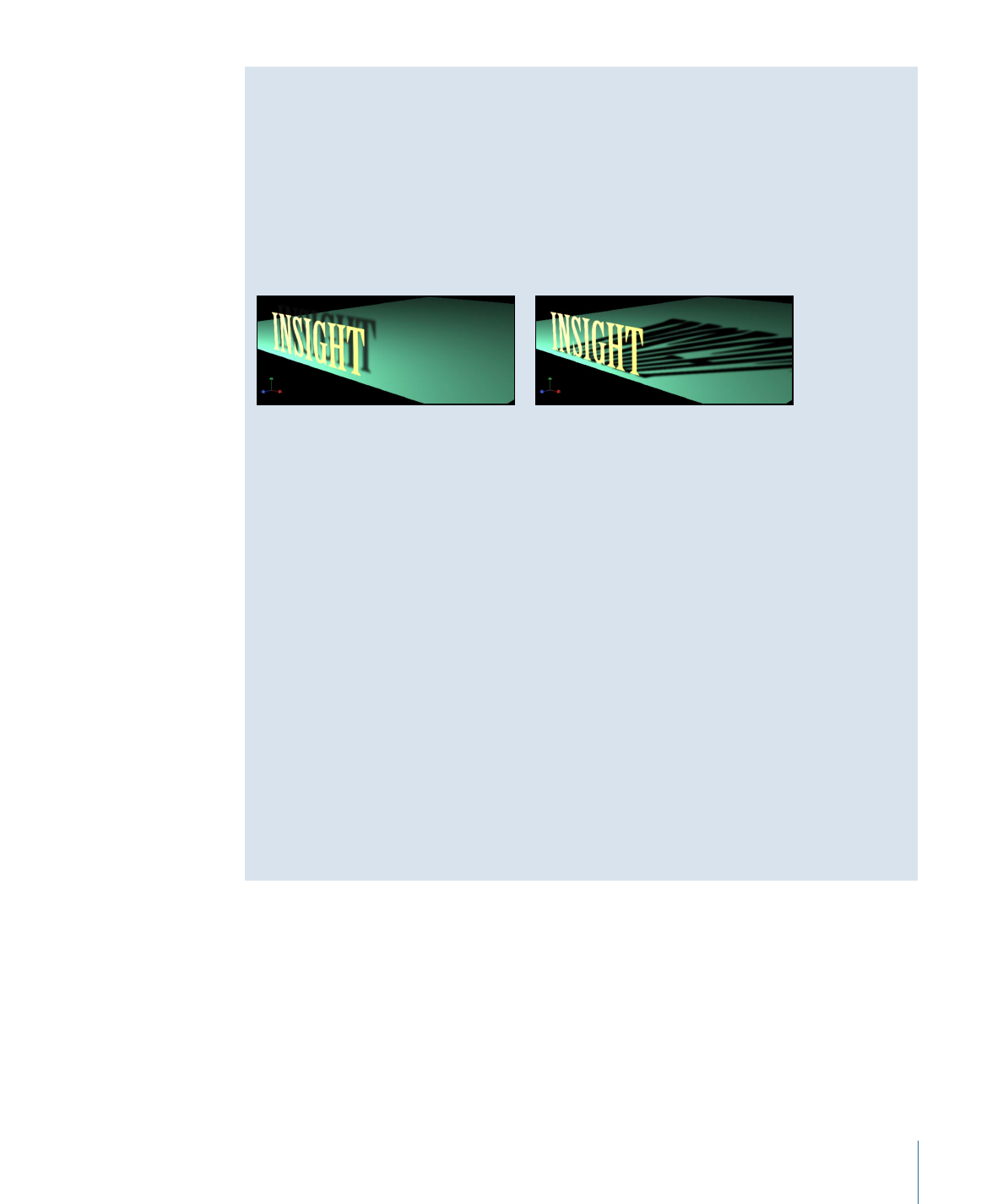
Shadow Controls
Shadows are controlled by adjusting settings in two places. Point and spot lights have a
Shadows section in the Light Inspector, and all visible objects have a Shadows section in
the Properties Inspector.
Note: 2D groups at the root level of the project do not have lighting or shadow controls.
To enable shadows on such a group, convert it to 3D or embed it in another 3D group.
1273
Chapter 21
3D Compositing
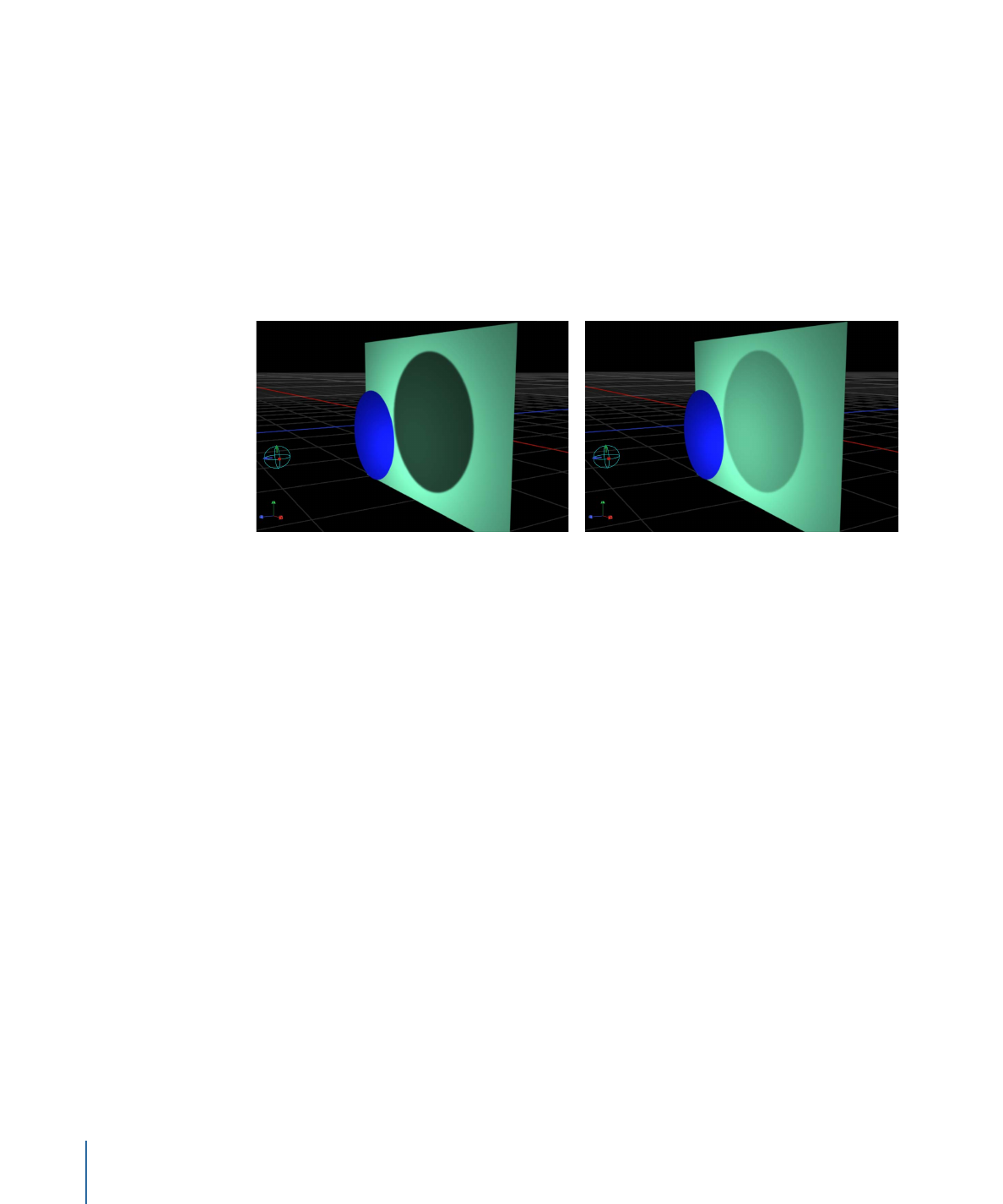
Shadow Parameters in the Light Inspector
Shadows:
This checkbox allows you to turn on Shadows controls. (When activated, the
checkbox is blue.) The Shadows checkbox allows you to set some lights to cast shadows,
and others not to cast shadows.
Selecting this checkbox causes the light to cast shadows on objects in front of it if the
objects also have shadow controls enabled. Deselecting it exempts the light from
generating shadows, regardless of settings of individual objects.
Opacity:
This slider controls the apparent opacity of the shadow. Dragging the slider to
the left creates a lighter shadow.
Opacity set to 25%
Opacity set to 75%
Softness:
This slider determines how blurry a shadow will appear.
Note: The appearance of a shadow depends on the rendering quality of the object casting
it. Because a shadow may be larger than the original object, you may see some jagged
edges or aliasing on the shadow. If you see such artifacts, check how your image looks
when the project is set to best quality, rather than draft or normal. For more about Canvas
display quality, see
Canvas View Options
.
Uniform Softness:
This checkbox lets you constrain the results of the softness slider to
a uniform amount of blur on the shadow regardless of distance between the light, the
object casting the shadow, and the object receiving the shadow.
By deselecting the checkbox, you enable nonuniform softness, where the farther the
objects are from each other, the more blur is applied.
1274
Chapter 21
3D Compositing
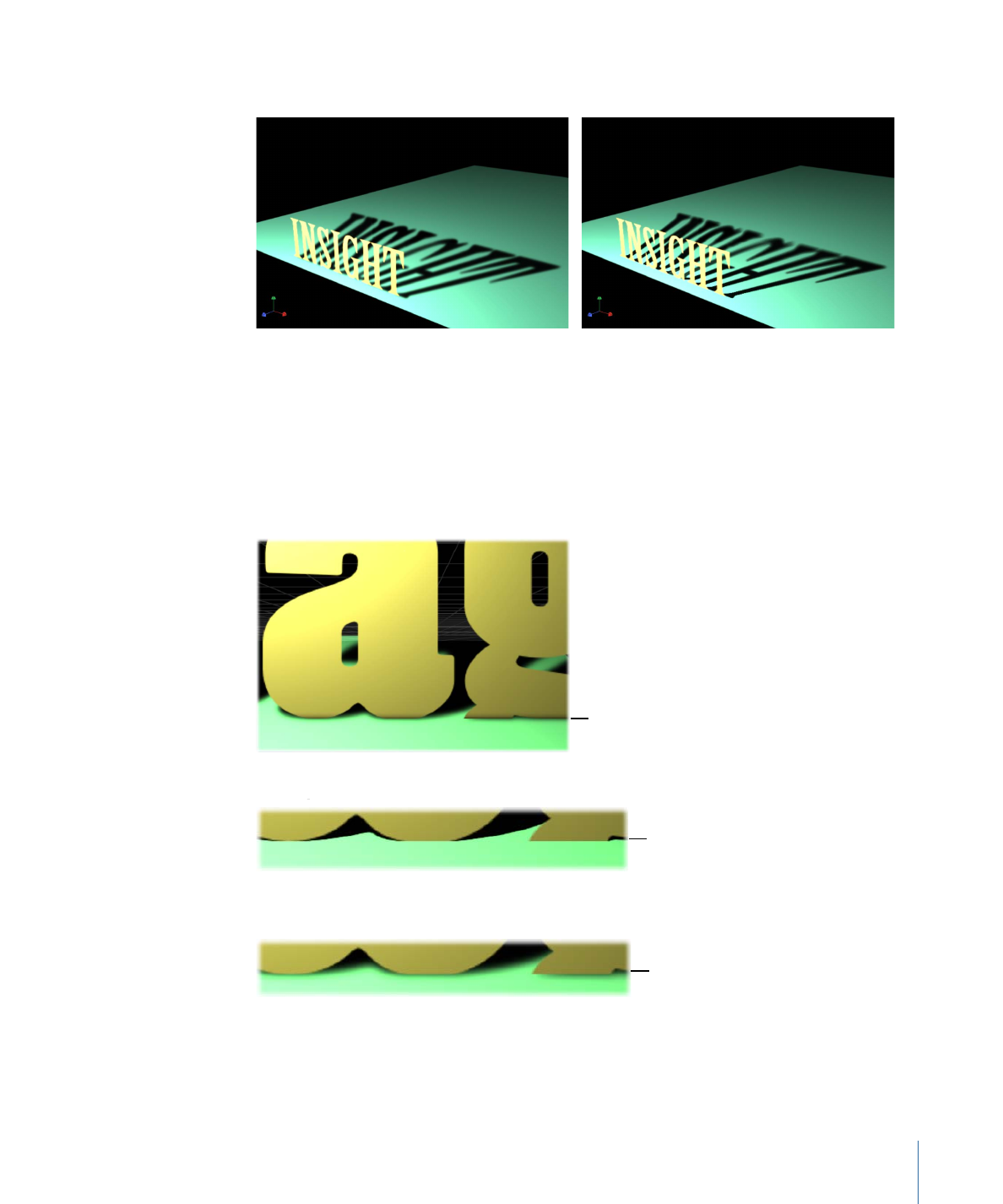
Note: Selecting nonuniform softness can impact playback performance.
Nonuniform softness
Uniform softness
Note: Intersecting objects reveal an unnatural effect of using uniform softness. Because
an equal amount of blur is applied to the entire shadow, the blur appears to spill out in
front of the intersecting object, creating a strange appearance. This effect can be
eliminated in two ways: by deselecting the Uniform Softness checkbox or by setting the
object to not receive shadows.
Nonuniform softness
Uniform softness
Uniform softness with text object rejecting shadows
Shadow appears in front
of intersecting objects.
No shadow appears.
The shadow is not visible
on the text object.
1275
Chapter 21
3D Compositing
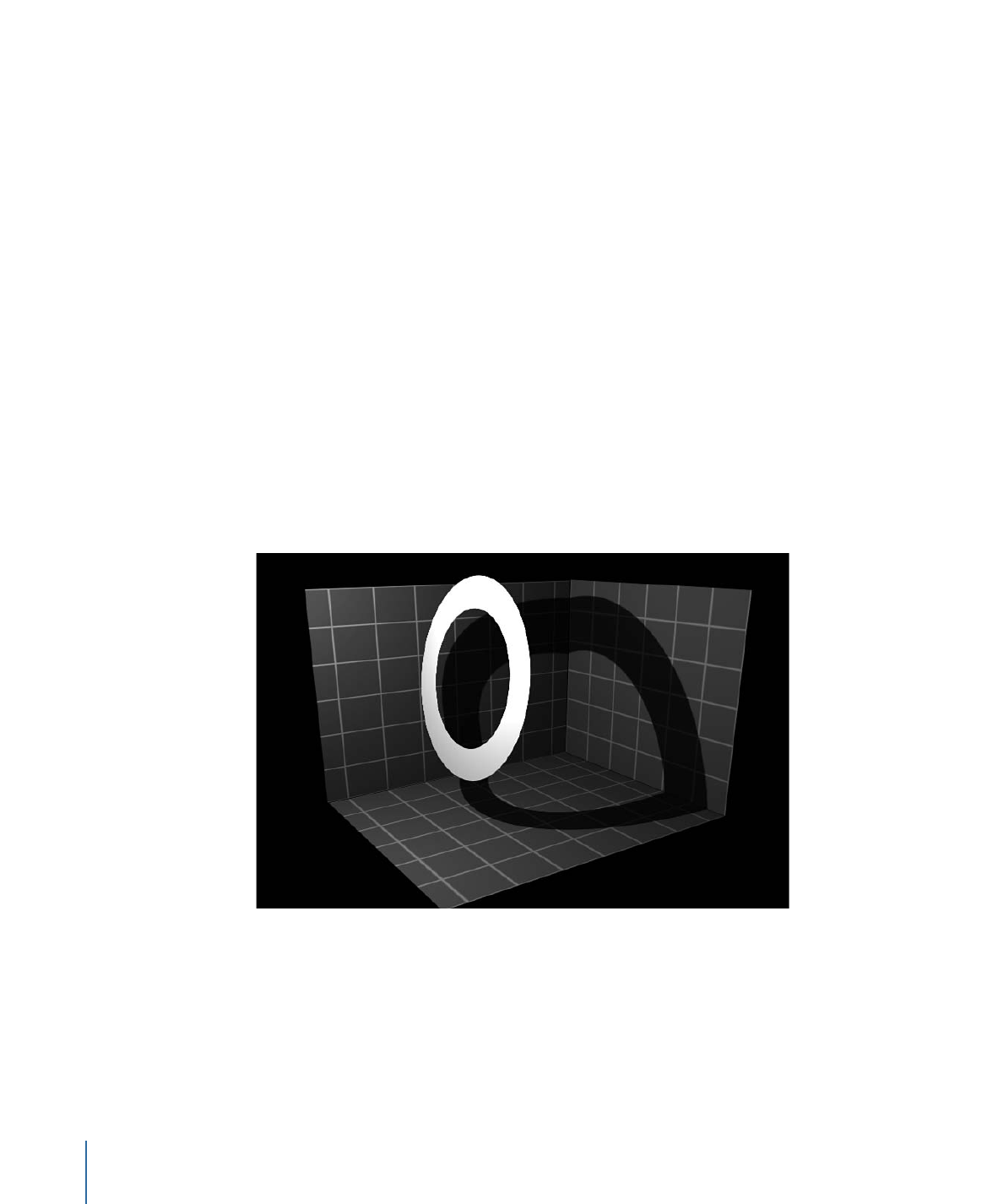
Color:
This control allows you to set the color of the shadow. Although semitransparent
objects cast lighter shadows than opaque objects, you cannot create light transmission
effects wherein a semitransparent object allows some light to pass through it, picking
up its color or pattern and projecting that as part of the shadow, as light passing through
stained glass does. For more information on using the color controls, see
Color Controls
.
Note: When light shading is turned on, shadows are multiplied with the objects upon
which they are cast. This means that the result is a darkening effect, regardless of the
color of the shadow. If you select a shadow color lighter than the background upon which
is is cast, the shadow may not be visible. So, for example, when shading (lighting) is turned
on, it is not possible to cast a white shadow on a dark surface. To override this effect, you
must disable shading. For more about using shadows without lights, see
Shadows Without
Lights
.
Shadow Parameters in the Properties Pane
Every visible object in a 3D space has shadow controls in the Properties pane of its
Inspector. This includes shapes, clips, particles, and so on. Lights, Cameras, and 2D groups
at the root level of the project do not have shadow controls.
Cast Shadows:
This checkbox sets whether an object casts a shadow if it is between a
light source and another object.
1276
Chapter 21
3D Compositing
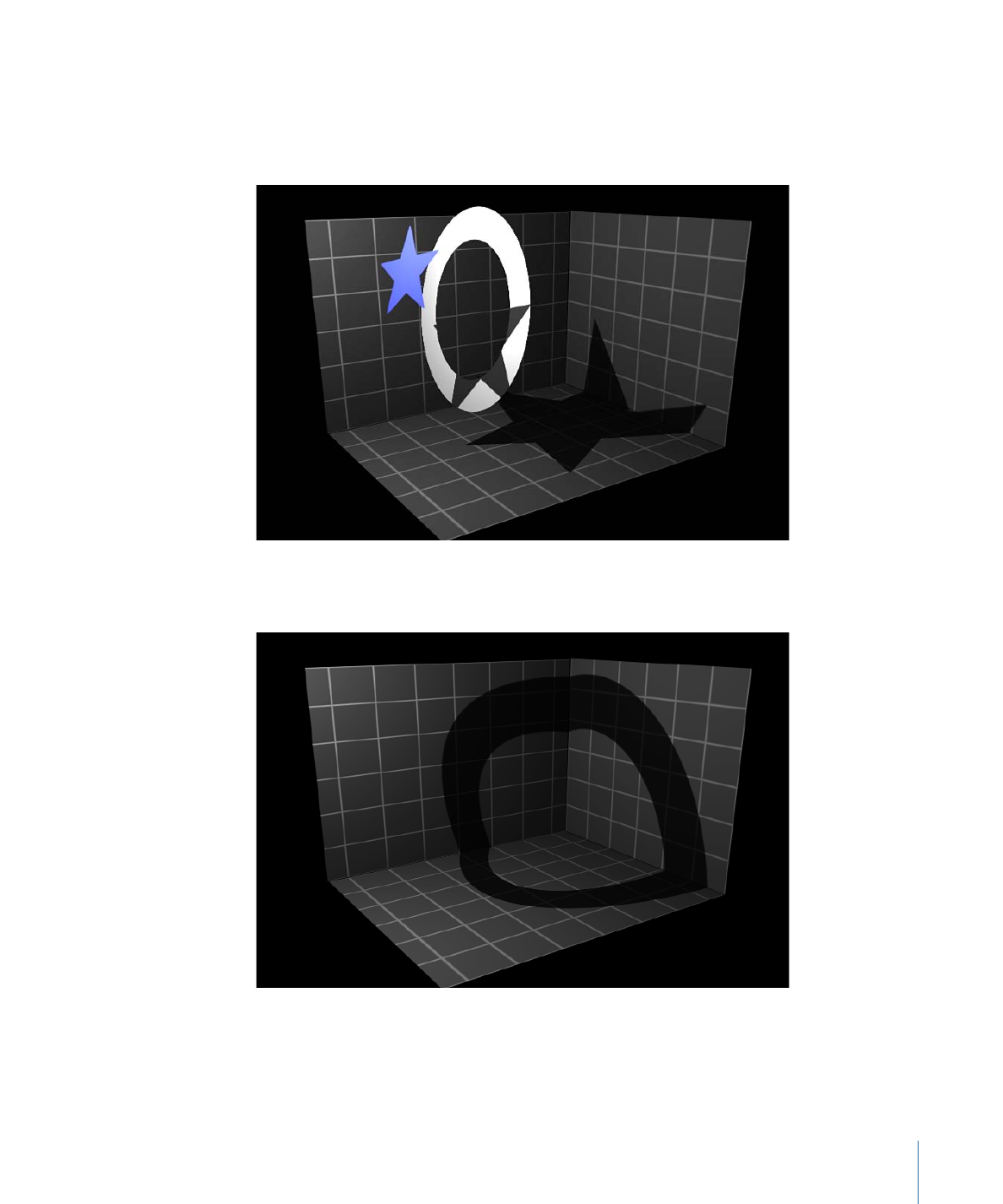
Receive Shadows:
This checkbox controls whether neighboring objects’ shadows affect
the current object. When deselected, light affects the object as if the shadow-casting
object did not exist. The following image depicts an object (the white ring) with the
Receive Shadow checkbox selected and the Casts Shadow checkbox deselected.
Shadows Only:
This checkbox allows an object to block light and cast a shadow, while
the object itself does not appear in the scene.
1277
Chapter 21
3D Compositing
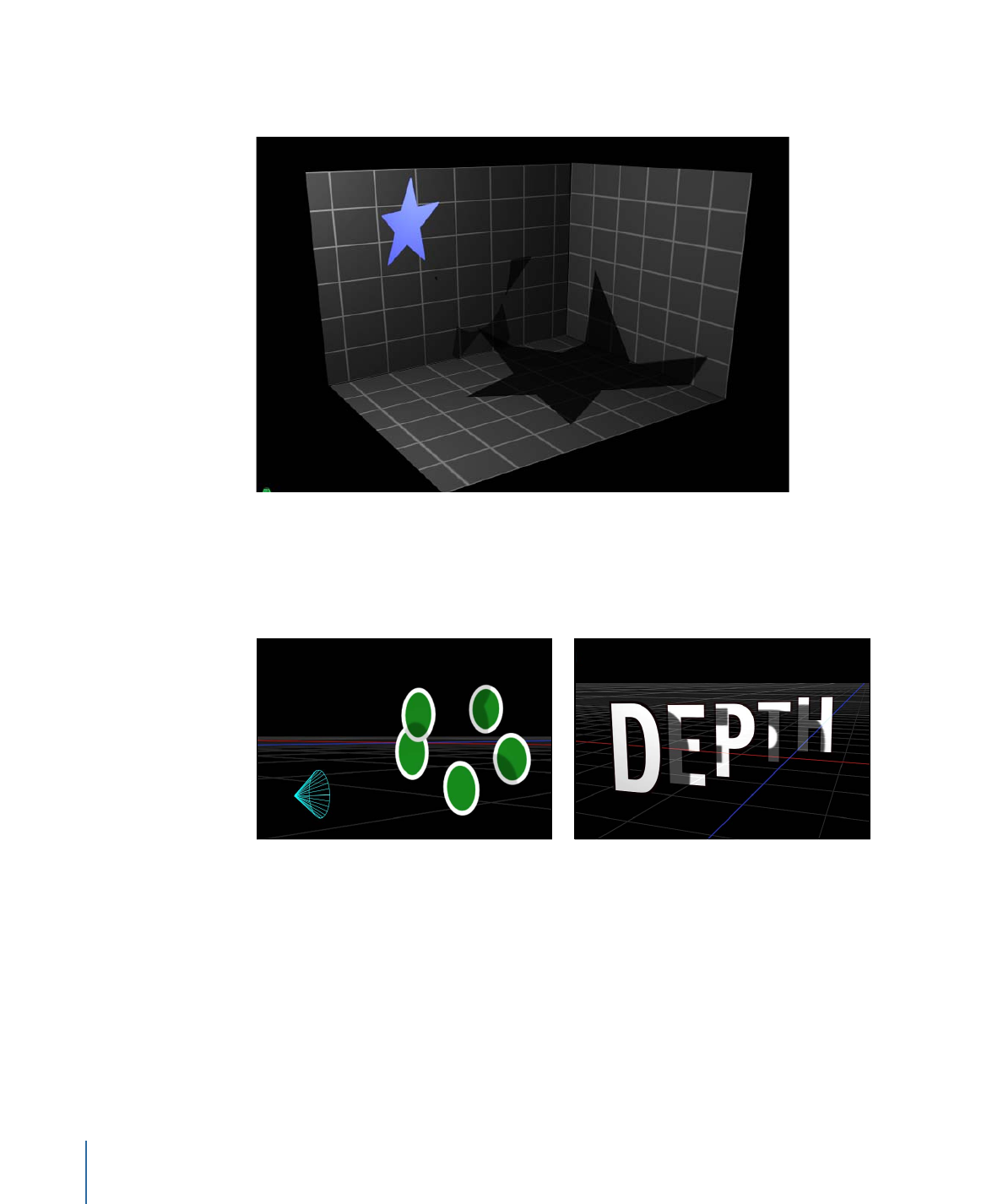
You can select both Receives Shadows and Shadows Only, which makes the object invisible
except for the regions where a shadow is cast upon it.